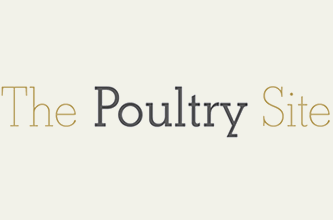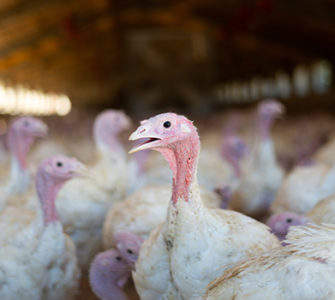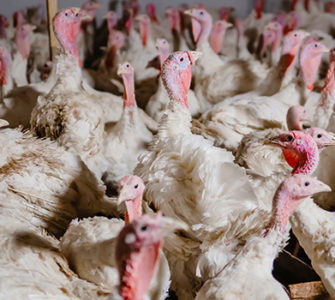Bone characteristics and femoral strength in commercial tom turkeys
Reducing the energy and protein levels in the diet of male turkeys to 60 per cent of NRC recommendations improved both the strength and quality of the leg bones in a Michigan State University experiment. Bone length and ash content were not different from other treatments by the time the birds reached market weight.
Selection for rapid growth in turkeys has resulted in skeletal problems such as femoral (leg) fractures, according to R.C. Van Wyhe and colleagues at Michigan State University.
In their paper in Poultry Science, they report that slowing growth rate has improved bone structure but the effect on mechanical properties of the bone is unclear.
The current study’s hypothesis was that slowing the growth of turkeys by reducing energy and crude protein in the diet would result in increased femur integrity.
Commercial turkeys were fed one of three diets: control with 100 per cent of National Research Council (NRC) energy and crude protein levels, as well as a diet feeding 80 or 60 per cent of NRC energy and crude protein levels. All other nutrients met or exceeded NRC requirements.
Control birds were grown to 20 weeks of age, whereas the 80 and 60 per cent NRC birds were sampled when bodyweight matched that of control birds at weeks 4, 8, 12, 16 and 20.
Both femurs were extracted, with one being measured and ashed and the other twisted to failure to evaluate mechanical properties. Total bone length, diameter, cortical thickness, and cortical density were measured.
Total femur length was longer in the 60 per cent NRC birds at 5kg and 10kg bodyweight than the controls (P<0.05) but this significance was lost by the time birds reached 16kg bodyweight.
At 5kg and 10kg bodyweight, ash content was higher in the control birds than in the 60 per cent NRC birds (P<0.05). At 16 kg of bodyweight, the 60 per cent NRC birds had the highest femur ash (P<0.05).
The mechanical testing parameters were failure torque, shear strength and shear modulus of the bones.
The 60 per cent diet produced the highest failure torque (P<0.05), at 16kg bodyweight and onward.
The shear strength was greater (P=0.01) once the birds reached 5kg bodyweight for the 60 per cent diet than other diets.
Reducing the energy and protein in the diet to 60 per cent of NRC recommendations – thus slowing growth – improved bone strength, as measured by failure torque, and bone quality, as measured by shear strength, without altering bone length or ash content by the time birds reached market weight, concluded the East Lansing-based researchers.
Reference
Van Wyhe R.C., P. Regmi, B.J. Powell, R.C. Haut, M.W. Orth and D.M. Karcher. 2014. Bone characteristics and femoral strength in commercial toms: The effect of protein and energy restriction. Poultry Science. 93:943-952. doi: 10.3382/ps.2013-03604
Article courtesy of ThePoultrySite.com
Posted on October 13, 2014

















